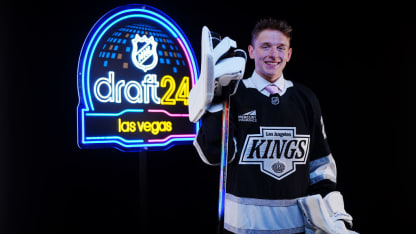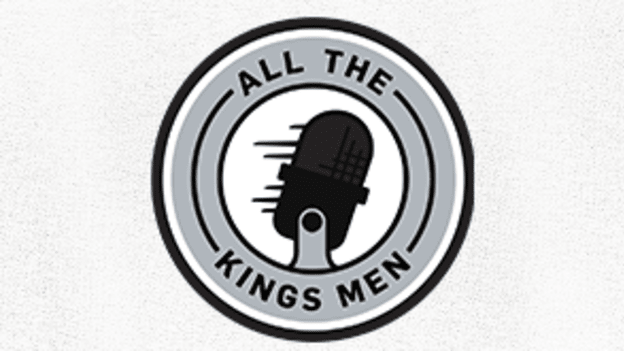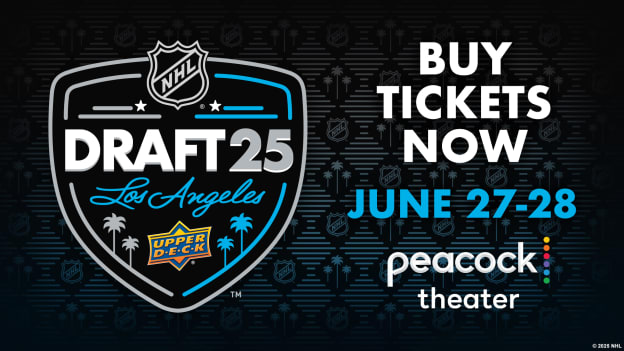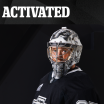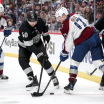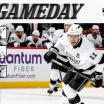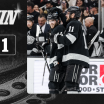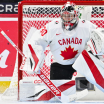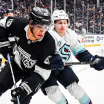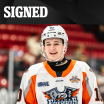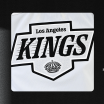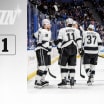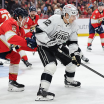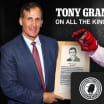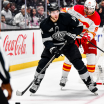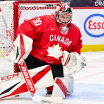“I’m fairly honest and I think I’m fairly good at evaluating past performance. Last year was an exceptional draft. The only thing is, you get worried about goalies, because of the success rate, but damn he’s a good goalie. So, as I said, in terms of drafting a goalie, I have high confidence in terms of him versus other goalies. I think last year was an exceptional draft.”
That was Kings Director of Amateur Scouting Mark Yannetti looking back at the Kings’ 2024 NHL Draft Class one year later.
The Kings made four picks last June in Las Vegas, coming away with two forward prospects, one defenseman and one goaltender. Yannetti and the Kings were very happy with their haul from a quality standpoint and also pretty happy with the way they played their board. The Kings entered the day without a second-round pick but acquired one early, before the draft began, by moving down in Round 1 in a trade with Montreal, adding a late second-round pick in the process. That has been well documented.
What I found interesting was the way the Kings did it. They used analytics to make the call. As Yannetti spoke about, it took him some time to convince then General Manager Rob Blake to move down, but by working hard on models, simulations and the right sorts of projections over multiple years, the analytics team, along with Yannetti, were able to provide backing for upper management that trading down would still mean that a player from the same tier they’d be picking from at 20 would be available at 26, while also providing a strong confidence that the player the Kings wanted to pick in the second round would also be there.
As it turned out, two players from that tier were available, which the Kings were confident would be the case. One of those players was forward Liam Greentree, who the Kings ultimately selected.
“I think that Greentree is, and you never know, but Greentree is easy, self explanatory, I think he’s going to be a top six without blinking, possible top three,” Yannetti said of the Greentree pick, one year later. “He’s going to score goals, he’s got size and the value we extracted at that pick was high.”
The other part of that trade, though, was contingent on acquiring a very specific player in Round 2 – Carter George.
If that part of the trade didn’t work, while the Kings got what they thought they would in Round 1, the confidence to move back in later years might not have been there. Yannetti called it a “calculated risk” that both sides of the trade would work out. He explained that it’s easy to convince someone to trade up, because you’re trading up to draft a very specific player. In trading down, you’re trading down in a belief that the overall quality of what you pick will exceed what you’d take with one pick where you were at. In this case, the combination of Greentree and George exceeded the first-round pick at 20, which might have been Greentree anyways.
In getting George as well, the Kings were very validated by trading down to get a player from their original tier, plus a highly desired goaltender.
“On Carter George – Owen Sound should have been picking first in the OHL draft this year, they somehow made the playoffs,” Yannetti said. “He’s on the track. I think he is a high probability of success.”
The entire discussion regarding the decision to trade down is available in the podcast below.

